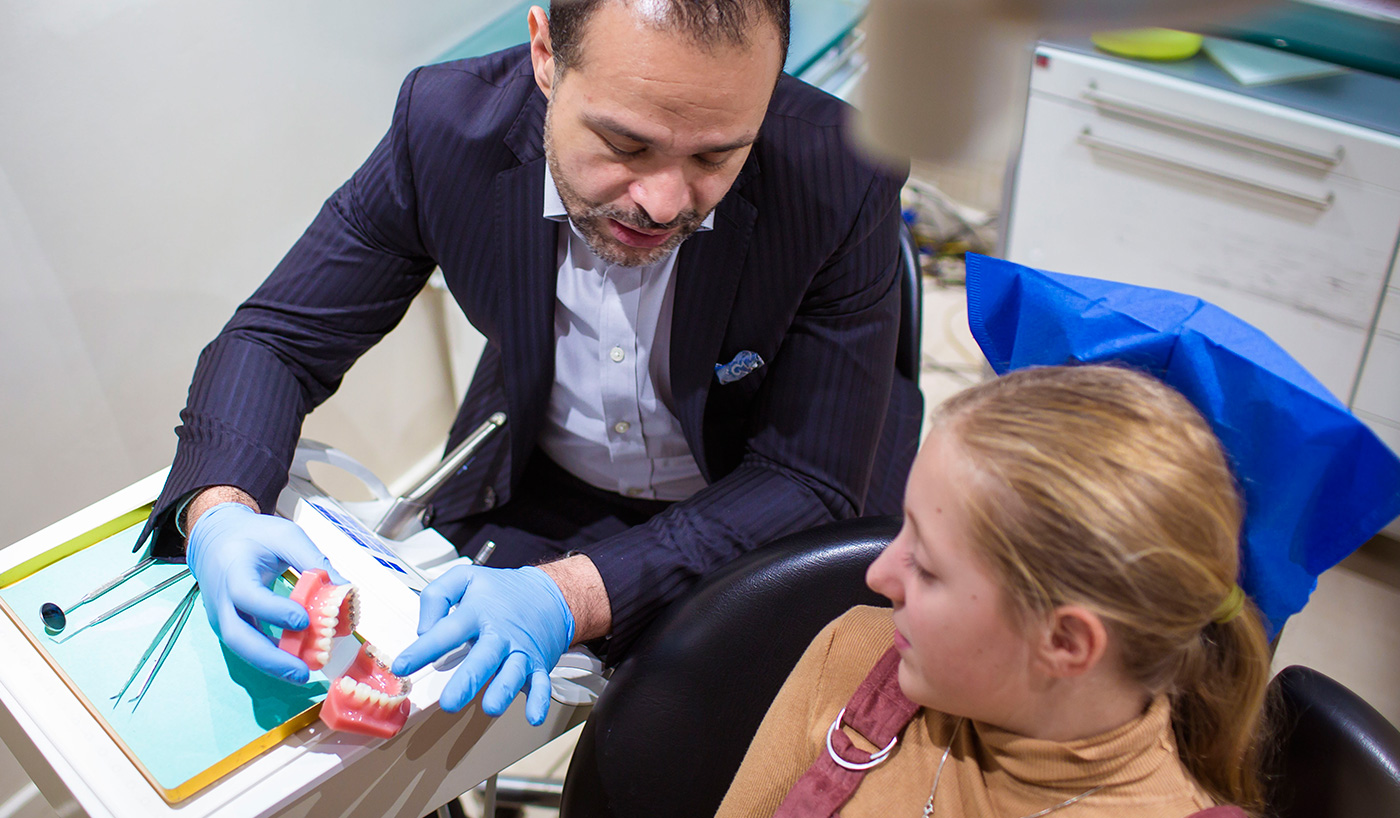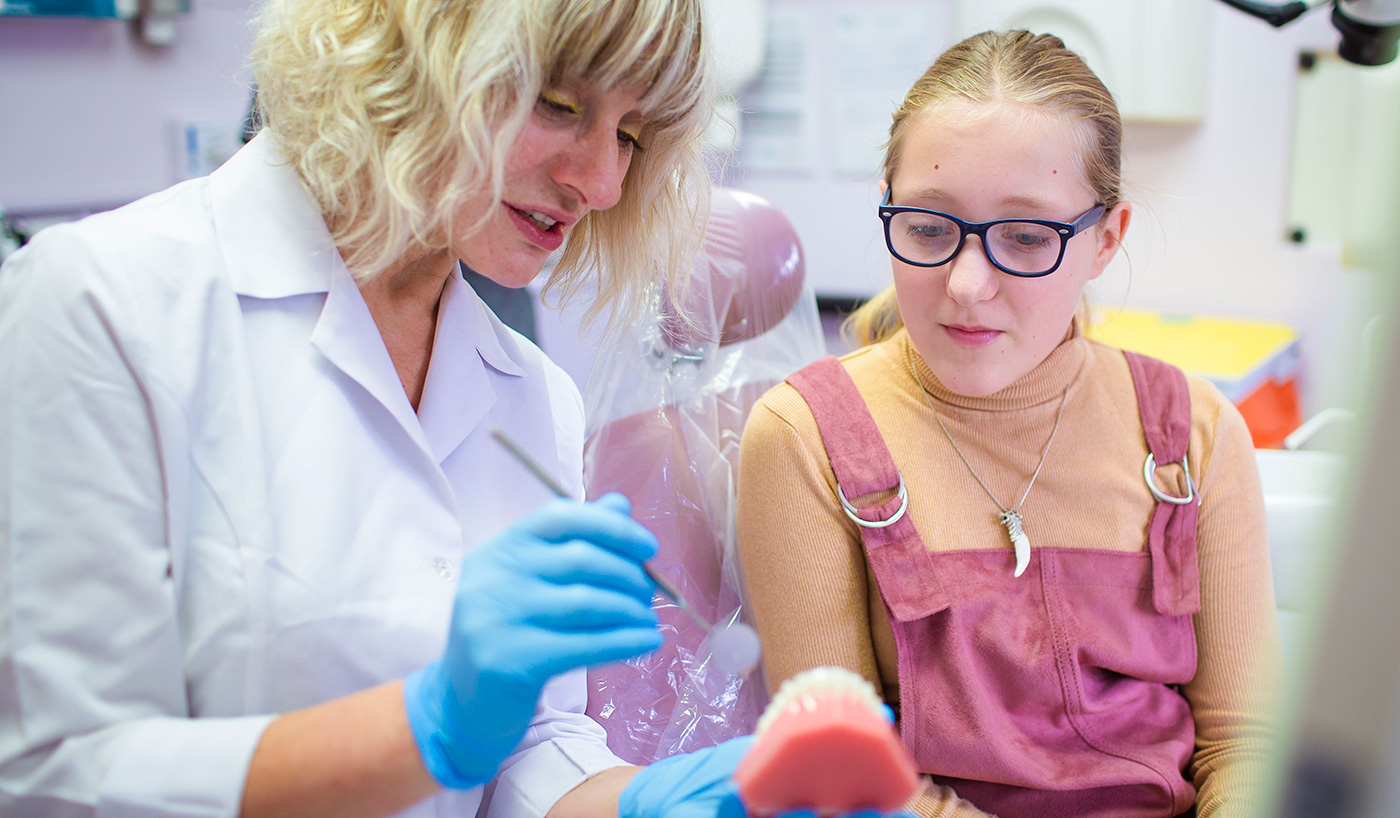Lingual braces by a Specialist Orthodontist
The term orthodontist is derived from ‘orthos’, a Greek word that means normal, straight or correct, and ‘dontos’ denoting teeth.
Lingual Orthodontics gets its name from the term “lingual” which indicates the tongue, and it is on the inner surface of your teeth, at the side of the tongue that lingual braces are fixed. Unlike traditional braces, lingual braces are undetectable and this perhaps is their greatest plus point. Lingual braces were available right from the 1980s when they were initially introduced in California. Since then, a variety of superior designs have been manufactured in various countries and today they are used worldwide by orthodontists for dental patients who choose not to have detectable braces.
Now lingual braces may just be required for nine months although difficult cases can take about two years. Most lingual braces to set straight teeth are fixed on adult patients although children above fourteen years can undergo this treatment. Even though lingual braces are not visible, our patients are truly conscious that they are indeed there. In the beginning, the tongue tends to become raw and painful. It can affect speech and in an initial couple of weeks, it produces a whistling sound or lisp. Wearing orthodontic lingual braces makes it hard to masticate food since for the initial few months the braces separate the teeth.

Invisalign - the clear aligners solution
Invisalign orthodontic braces refer to a technique that entails a series of transparent ‘aligners’ that help shift the teeth delicately into their final position. Something like 5-25 aligners may be used. These are always put on but since they are transparent, these devices are practically unnoticeable. Your baker Street orthodontist will suggest this treatment for minor to moderate dental problems, particularly where a practically undetectable but detachable brace is needed.
Even now, people imagine orthodontic braces to be those big metal ones but contemporary braces can be absolutely see-through. They are most appropriate where Invisalign is unsuitable or where the additional expenditure on lingual braces or Invisalign is exorbitant. A stunning smile is just one of the many benefits that orthodontics provides. Teeth that are very evident are likely to suffer from trauma and aligned teeth are much easier to clean and also they work well.
Self-ligating braces
Self-ligation apart from being a novel kind of brace is also a tooth movement philosophy that makes use of extremely light pressure applied by these minimal friction braces and superior shaped memory wires. Continuous gentle pressure affects the movement of teeth. Previously, conventional orthodontic treatment made use of heavy sporadic pressure. According to research, this light, minimal friction pressure seems to make more biological logic. The outcome is more stress on the non-removal of teeth to achieve our objective of healthy, well-defined teeth and an attractive smile that goes with the facial appearance.

Traditional fixed braces
Fixed braces consist of brackets and bands that your Baker Street orthodontist fastens onto each tooth. Levelling wires pass between the different attachments and the uneven teeth are moved by means of elastics and, at times by headgear. The dental patient must not take out the fastened attachments. The orthodontic treatment takes about nine months to two years while difficult cases are more protracted. It is very unusual for the orthodontist to continue with the treatment for over three years. Stainless steel fixed braces are the most widely used ones.
Composite materials that are extremely tough, and rarely stain used in ceramic brackets. Mystique, Transcend, and Clarity are three well-known brands. Adults prefer ceramic as they merge well with their teeth and are far less conspicuous than metal. The actor Tom Cruise wears these kinds of braces.
Headgear
Orthodontic headgear is employed in one kind of early rectification. It involves fixing metal rings or bands around the six-year upper molars to serve as anchors on top of which the headgear is placed!
Headgear generates special pressures that direct the development of the jaws and face. In addition, it is employed to shift teeth into optimal positions or to stop teeth from shifting when they should not.

